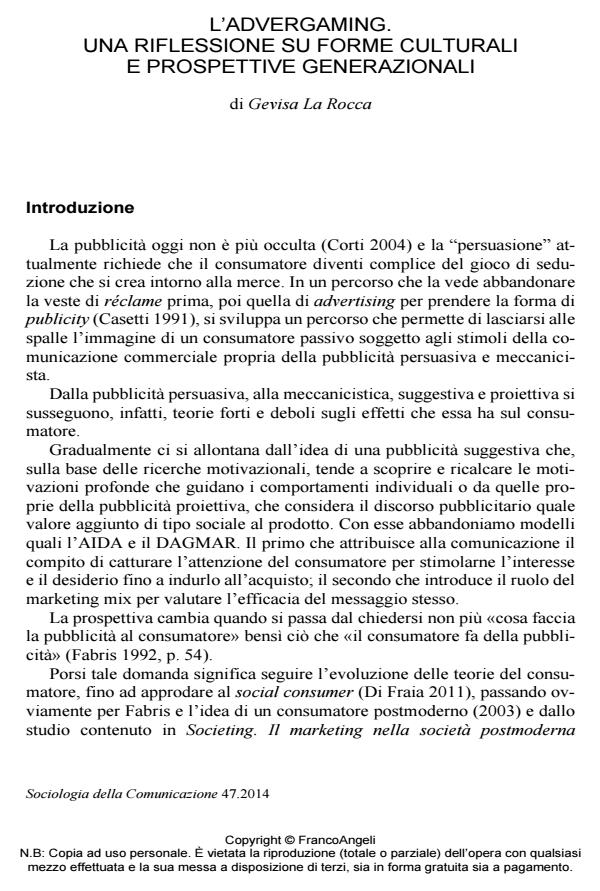Advergaming. An overview on cultural forms and generational perspectives
Journal title SOCIOLOGIA DELLA COMUNICAZIONE
Author/s Gevisa La Rocca
Publishing Year 2014 Issue 2014/47
Language Italian Pages 22 P. 25-46 File size 116 KB
DOI 10.3280/SC2014-047004
DOI is like a bar code for intellectual property: to have more infomation
click here
Below, you can see the article first page
If you want to buy this article in PDF format, you can do it, following the instructions to buy download credits

FrancoAngeli is member of Publishers International Linking Association, Inc (PILA), a not-for-profit association which run the CrossRef service enabling links to and from online scholarly content.
Over the last fifty years, advertising has changed several times as: from réclame to advertising to publicity, also have changed the interpretative theories that accompany it. In this study we produced a reflection about a new form of commercial communication: the advergaming. The advergaming is divided into: adgames and in-game advertising. To emphasize the strength of advergaming we will produce, before, an analysis of the characteristics of video games and then we’ll address the issue of the semiotics of advertising and semiotics of video games. We develop this path to reflect on the consequences that this new form of commercial communication - which recalls the transmedia narrative - has on the younger generation.
Keywords: Advergaming, semiotics of video games, convergence culture, transmedia narrative, younger generation.
Gevisa La Rocca, L’advergaming. Una riflessione su forme culturali e prospettive generazionali in "SOCIOLOGIA DELLA COMUNICAZIONE " 47/2014, pp 25-46, DOI: 10.3280/SC2014-047004